-
Posts
1,175 -
Joined
-
Last visited
-
Days Won
8
Content Type
Profiles
Forums
Blogs
Gallery
Events
Store
Posts posted by demir
-
-
-
-
-
-
-
-
-
-
-
-
-
-
-
-
THANK YOU TERRY,
LOVELY TOPIC.
AS YOU SAY I AM STILL AWAY FROM HOME BUT I USED THE PICTURES IN MY LAPTOP AND ALSO USED THE PICTURES POSTED BY GMIC FRIENDS (THANKS).
I WILL TRY TO UPLOAD THE TWMs BY DIFFERENT MANUFACTURERS GIVING THEIR NAMES AND "TUGRA"s AND REVERSES.
PLEASE SEE THAT THE BASE ENAMEL DIFFERENCES BETWEEN THE MANUFACTURERS. ALSO NOTICE THE DIFFERENCES BETWEEN TWMs MADE BY THE SAME MANUFACTURER.
CHECK THE DIFFERENCES IN BB&Co. AND OTHER MANUFACTURES TUGRAS AND "EL GAZI" SIGNS.
I HOPE THIS WILL HELP.
ALL THE BEST

demir
TWM MANUFACTURER NAME:
AWS
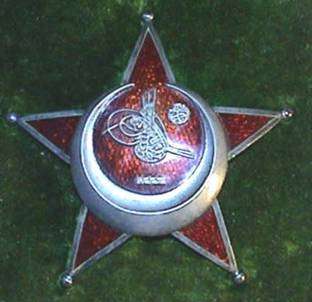
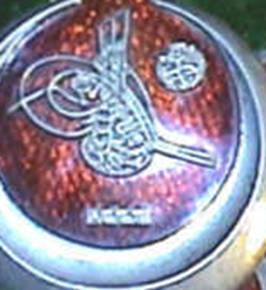 0
0 -
Nice one Demir. That Tugra is very different from the usual ones. Actually, I wanted to ask you if you had ever tried to show all the various types of Tugras found on the TWMs and possibly the names of any manufacturers identified, all next to each other? (I notice in Dogan Koleksiyon Para 2009, pages 129 and 139 that various Tugras are shown, corresponding to different Sultans. Have you thought of doing the same for the Tugras found on these stars?)
Hi Terry,
I will try to do that.
 But it will also be better to see the style of the base emaille in order to idendify the maker. Some makers use different Tugras
But it will also be better to see the style of the base emaille in order to idendify the maker. Some makers use different TugrasOf course you now but for other friends:
Tugra'S (Signature of the Sultan) on all TWM are all Sultan MEHMED RESAT. The small sign on the right top corner is EL GAZi (Had been to a war and survive)i the date is 1333 - 1917. Some has only 333.
All the best
demir
0 -
reverse
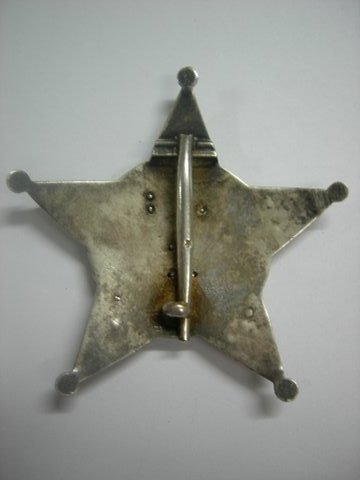 0
0 -
HI,
WHAT ABOUT THIS AUSTRIAN MADE SILVER TWM?

PLEASE NOTE THE ARMS OF THE TUGRA COVERING EL GAZI.
ALL THE BEST
demir
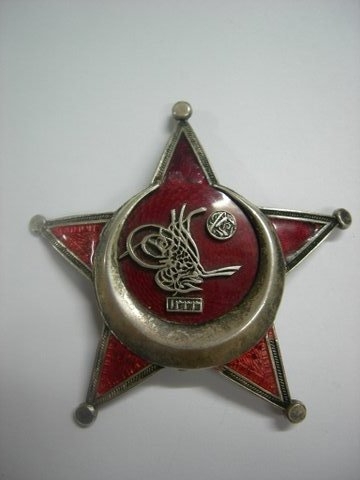 0
0 -
Hi Terry,
As we discussed before this is a very nice medal.
Tugra is up in between the arms of the star and elgazi the small part has a cut edge on the lower right corner.
Tugra is very close to AWS type. Only two small hole differences in the tugra. Also the date rivet can be seen.
The pin is also unusual for these types. I think it is German made not Austrian. Lovely piece.
all the best

demir
0 -
That is a great bar! I have never seen those last two medals before. I bet that they are both very rare. Do you know the number of those lifesaving and rail road medals awarded?
HELLO,
NICKEL RAILWAY IS APP. 30.000, LIFE SAVING I HAVE NO DATA.
BUT I THINK THE BAR IS MADE BY THE OWNER. BECAUSE THE RIBBONS OF THE OTTOMAN MEDALS ARE NOT ORIGINAL COLORS.
RAILWAY RIBBON COLOR IS: GOLD- RED, SILVER- GREEN, NICKEL- RED
AND LIFE SAVING RIBBON COLOR DEPENDS THE NUMBER OF BRAVERIES SHOWN: 1- GREEN 2- RED 3- WHITE AND 4 OR MORE TIMES ALL THREE COLORS.
ALSO, THE DATES MAKE IT INTERESTING BECAUSE GERMAN MEDALS MUST HAVE BEEN GIVEN AT LEAST 6 YEARS LATER, BECAUSE THE IRON CROSS IS DATED 1914.
SO either THE PERSON WHO HAD THIS BAR WORKED IN THE RAILWAYS AND LATER FOUGHT IN THE WWI
 or SOMEONE CREATED A scenario
or SOMEONE CREATED A scenario 
demir
0 -
-
HELLO,
I BOUGHT THIS BAR RECENTLY.

I THINK IT WAS GIVEN TO A GERMAN ENGINEER BUILDING THE HIDJAS RAILWAY.
demir
 0
0 -
Commemoration
Frigate Ertuğrul Memorial in Kushimoto, Japan
Ironically, this accident created a general sympathy in Japan for Turkish people and led to the establishment of a strong basis for which friendship between Turkey and Japan was to later flourish.[8]
In February 1891, a cemetery was established for the 150 sailors recovered dead at the calamity, and a memorial next to it was built near the lighthouse in the town of Kushimoto, Wakayama.[9] Emperor Hirohito visited the cemetery on 3 June 1929, which was extended the same year. Turkey renovated the monument in 1939.
In 1974, a "Turkish Museum" was established, in which a scale model of the ship, photographs and statues of the sailors are on exhibition.[1]
The event is being commemorated every five years on the day of the tragic accident in Kushimoto with the participation of high-level officials from Turkey and Japan.[8]
In June 2008, Turkish president Abdullah Gül, visiting Japan officially, proceeded from Tokyo to Kushimoto to take part at a commemoration together with regional officials.[10]
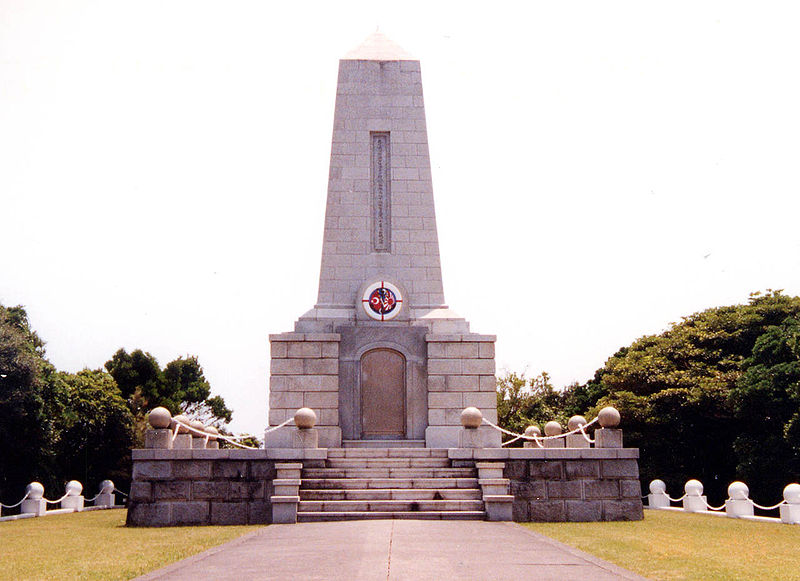 0
0 -
HELLO,
FRIGATE ERTUGRUL (tr.wikipedia.org/wiki/Ertuğrul_Fırkateyni)
also pictures included
BEST WISHES
demir
Ship
Ertuğrul, ordered in 1854 by Ottoman Sultan Abdülâziz (reigned 1830-1876), was built in the Taşkızak Shipyard in Golden Horn, Istanbul and was launched on 19 October 1863 in presence of the sultan. She was named for Ertuğrul Gazi (1198–1281), the father of Osman I, founder of the Ottoman Empire. A three-mast wooden ship, she was 79 m (260 ft) long, 15.5 m (51 ft) wide and had a draft of 8 m (26 ft).
The frigate sailed to Great Britain in 1864, where it had steam engines and state of the art machinery installed, including electrical lighting.
On 18 February 1865, she left Portsmouth to return home with two other ships of the Ottoman Navy, Kosova and Hüdavendigâr, visiting some French and Spanish ports on the way. After arriving in Istanbul, she anchored awhile in the Bosporus in front of the Dolmabahçe Palace and later took part in the campaign against the Great Cretan Revolution in 1866.[3] Subsequently she was locked up in Golden Horn during the reign of Abdul Hamid II (1876-1909).
Turkish Japanese relations
In November 1878, the squadron Seiki of the Japanese Imperial Navy arrived in Istanbul en route to a training mission in Europe, and the envoy was received by Sultan Abdul Hamid II and honored with various medals.[4] Then, in 1881 the Emperor's relative Prince Kato Hito came to the court Yıldız Palace in an effort to conclude agreements relating to trade and wartime status.[5] Upon the visit of Prince Komatsu Akihito to İstanbul in October 1887 and the presentation of Japan's highest order, the Order of the Chrysanthemum, to the sultan, the government of the Ottoman Empire decided to send a ship on a goodwill voyage to Japan in return.[6]
Appointment
The Grand Vizier Mehmed Kamil Pasha the Cypriot sent a note on 14 February 1889 to the head of the navy, Bozcaadalı Hasan Hüsnü Pasha, asking the name and possible departure date of a battleship, which was suitable to sail to the seas of Indo-China and Japan in order to put the theoretical knowledge of Naval Academy graduates into practice. On 25 February 1889, Hasan Husnu Pasha informed that the frigate Ertuğrul was suitable for the assignment and could accomplish the preparations required within one week and set sail within one month. The real reason of the journey and its importance was revealed then by the Grand Vizier as a goodwill visit to Japan for the presentation of gifts and the highest decoration of the Ottoman Empire, 'Medal of High Honor', from the sultan to the Japanese Emperor.[7] Another aim of the voyage was to show flag on the Indian Ocean.[6]
On 6 April 1889, the naval ministry appointed as commanding officer Captain Ali Osman Bey, the most appropriate officer due to his knowledge of several foreign languages and his skills in seamanship.[7]
Voyage to Japan
The ship, in service for 25 years, was overhauled shortly before the voyage, and most of the hull's wooden parts were renewed.[6]
Ertuğrul, with 607 (disputed figure) sailors — including 57 officers — on board, was instructed to set sail from Istanbul on 14 July 1889, with Captain Ali Bey commanding.
The initial route was designed to make various necessary stops on the way. The first stop was planned in Marmaris, and the next one in Port Said before the passage through the Suez Canal. Visits in Aden and Somalia would follow the stay in Port Jeddah. Considering the seasonal winds, the ship would stop by at Port Pondicherry and Calcutta in India. After staying in Port Akabod and Port Singapore, she would carry on to Malacca by way of the Strait of Malacca. Proceeding to the north, the ship would stop by in Port Saigon and then in some docks in China to arrive in Hong Kong. Port Amoy and Shanghai would be the last stops before reaching Japan. Finally, after a stay in Port Nagasaki, the ship would arrive her destination in Port Yokohama. The return was scheduled in October of the same year.
The ship experienced some problems during her long journey. On 26 July 1889, she entered the Suez Canal and ran ashore in Great Bitter Lake, destroyed the stern post and lost the rudder. After repairs, Ertuğrul set sail again on 23 September. While sailing in western Indian Ocean, the ship took on water from the bow. The crew was unable to conduct the necessary repairs until they reached Singapore. Ertuğrul was repaired in Singapore and departed on 22 March 1890. After a ten-day stop in Saigon, she arrived in Yokohoma on 7 June 1890. The journey from Istanbul lasted around eleven months. Captain Ali Osman Bey was promoted to the rank of a commodore during the journey.[1]
In Yokohama, Admiral Ali Osman Pasha and the officers were received by Emperor Meiji of Japan on 13 June 1890. The gifts and the medal sent by Sultan Abdul Hamid II were presented to their intended recipients. Ali Osman Pasha was honored with the First Class Order of the Rising Sun, and Skipper Ali Bey with the Third Class Order of the Rising Sun. Other navy officers were also decorated with medals. Subsequently, Turkish officers were received by the Empress. On 14 June 1890, young Prince Yoshihito Haru received the Turkish admiral. On the following days, many receptions, dinners and ceremonies took place.
During her stay of three months in Japan, Ertuğrul frigate lost twelve crew members to epidemic.
Accident
On 15 September 1890 at noon, Ertuğrul set sail from Yokohama for Istanbul. The very good weather conditions at the departure changed the next day in the morning. A reverse wind began to blow, getting stronger towards evening. By nightfall, the wind came from below the bow so that the sails had to be folded. At the same time, violent waves in the rabid sea began beating against the ship, which, under severe trial, could hardly make headway. The 40 m (130 ft) high mizzen mast collapsed and caused severe damage by shaking from side to side and banging into the other (rigging) sails. While the storm continued gaining power, waves coming from the bow separated the deck boards from the front. Water broke through into the coal depots in the boiler room. In the next four days, the crew tried to repair the damage by remedying the sails and tightening the shrouds. They also continuously tried to empty the water with buckets out of the coal containers, which was the most serious danger, since the pumps were insufficient.
Despite all the efforts, the ship's disintegration was imminent and the only option was seeking sanctuary in a nearby port. They headed to Kobe, within 10 miles (16 km) of the ship, in the gulf beyond the Kashinozaki Cape with Oshima Lighthouse. Seawater breaking through finally extinguished one of the furnaces in the engine room. Almost immobile without main sails and sufficient propulsion, and having only the wind and the waves behind, Ertuğrul drifted towards the dangerous rocks at the eastern coast of Oshima Island. As the crew tried just to stop the ship before the rocks by emergency anchoring, the ship hit the reefs and fell apart at the first impact around midnight on 18 September 1890.
At the site of the accident, around 533 sailors, of whom fifty were officers including the commander Admiral Ali Osman Pasha, lost their lives. Only six officers and sixty-three sailors survived. Six of the survivors were uninjured, nine severely wounded and the others with only lightly injuries. After the rescue operation, two survivors were taken to Kobe by Japanese ships, another two by a Japanese battleship and sixty-five by German gunboats. All the sixty-nine survivors were transported back to Istanbul aboard Japanese corvettes Kongō and Hiei, leaving Shinagawa, Tokyo in October 1890. The sultan accepted the officers of the Japanese battleships on 5 January 1891 and expressed his appreciation for the relief operation by decorating them with medals[4]
Commemoration
Frigate Ertuğrul Memorial in Kushimoto, Japan
Ironically, this accident created a general sympathy in Japan for Turkish people and led to the establishment of a strong basis for which friendship between Turkey and Japan was to later flourish.[8]
In February 1891, a cemetery was established for the 150 sailors recovered dead at the calamity, and a memorial next to it was built near the lighthouse in the town of Kushimoto, Wakayama.[9] Emperor Hirohito visited the cemetery on 3 June 1929, which was extended the same year. Turkey renovated the monument in 1939.
In 1974, a "Turkish Museum" was established, in which a scale model of the ship, photographs and statues of the sailors are on exhibition.[1]
The event is being commemorated every five years on the day of the tragic accident in Kushimoto with the participation of high-level officials from Turkey and Japan.[8]
In June 2008, Turkish president Abdullah Gül, visiting Japan officially, proceeded from Tokyo to Kushimoto to take part at a commemoration together with regional officials.[10]
Salvaging the wreckage
On 4 January 2007, a salvaging project with contributions from the Institute of Nautical Archaeology (INA) in Bodrum, Yapı Kredi Retirement Partnership and the Turkish Foundation of Nautical Archaeology was announced to find the wreckage of Ertuğrul and completely float her to the surface. It is intended to exhibit her in the museum next to the Ertuğrul Monument in Kushimoto. U.S. and Japanese nautical archaeologists and historians join the excavation team.[11]
A team of well-known nautical archaeologists from Turkey, Spain and Japan under the leadership of Tufan Turanlı, director of INA, reached on January 28, 2008 the ammunition store section of the wreck in a dive within the second phase of the underwater excavation project. Three cannon balls, each 40 kg (88 lb), of the ship's Krupp naval guns, tens of bullets and pieces of naval mines were recovered and safely brought to the Port of Kushimoto, where explosive experts of local police, Japanese Army and Navy examined them. The artifacts were later taken to Ertuğrul Research Institute for conservation. Tufanlı recalled that two Winchester rifles recovered earlier are on exhibition in the museum.[12]
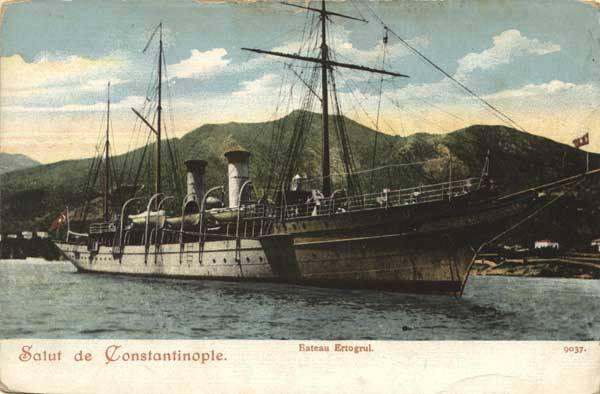
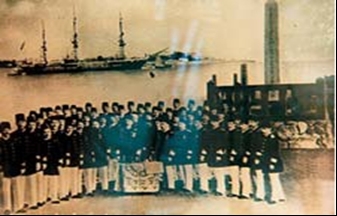 0
0





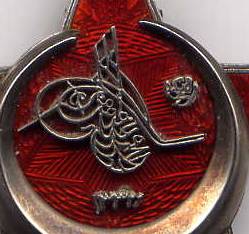
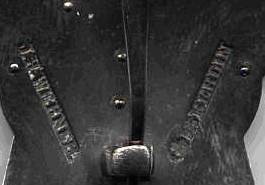
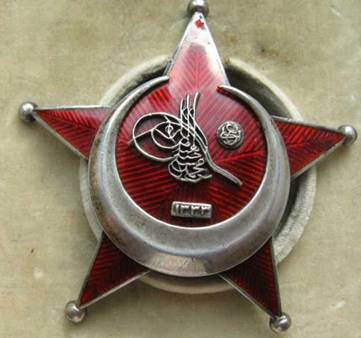
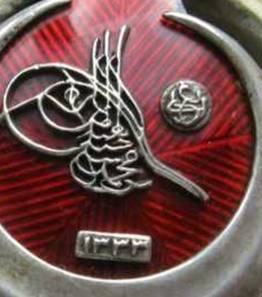
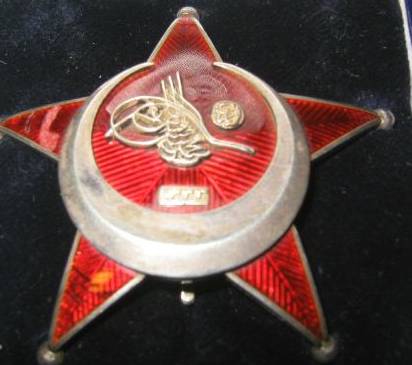
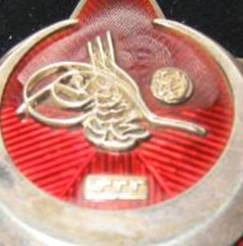
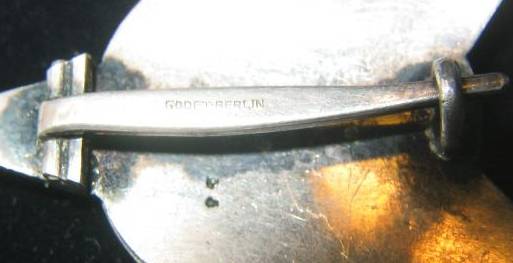
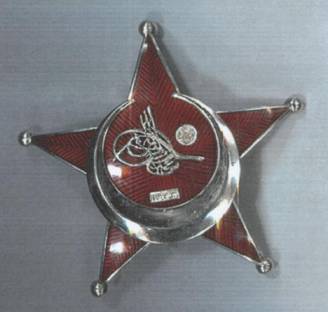
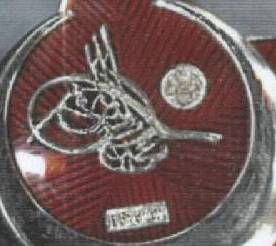
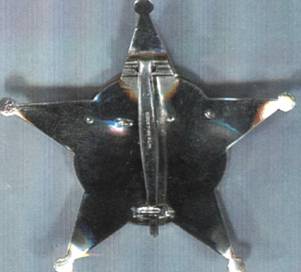

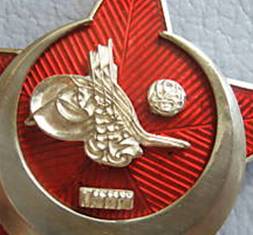
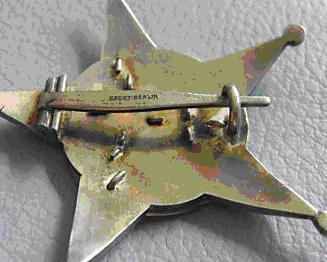
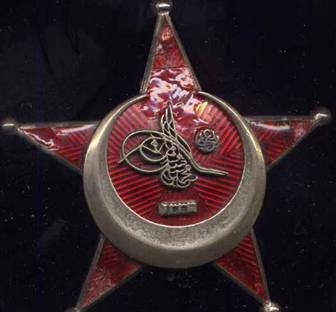
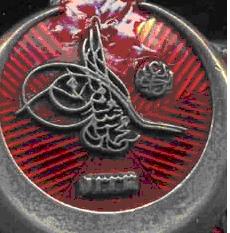

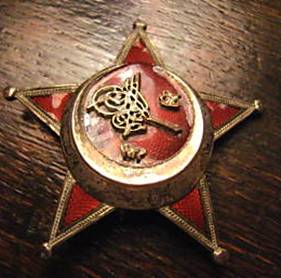
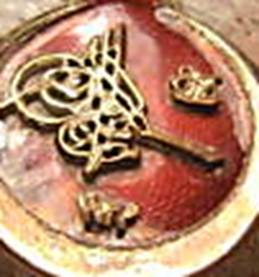
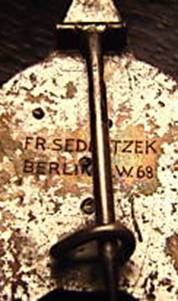


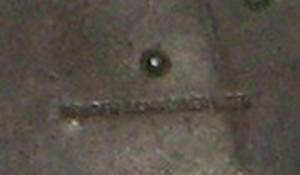
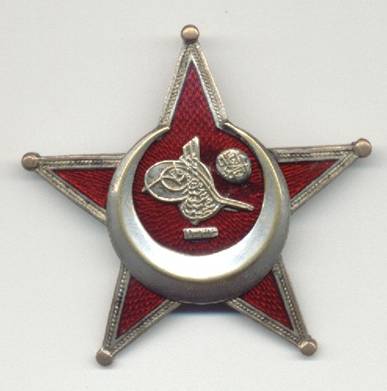
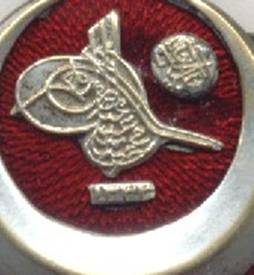
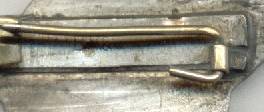

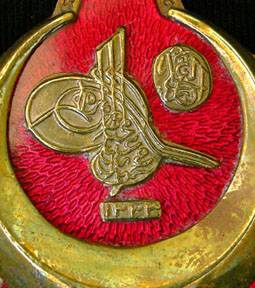
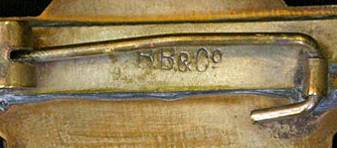
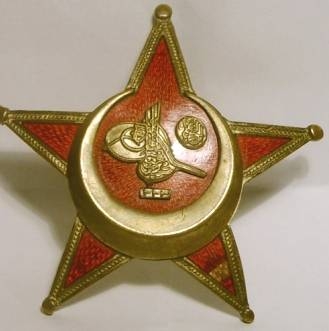
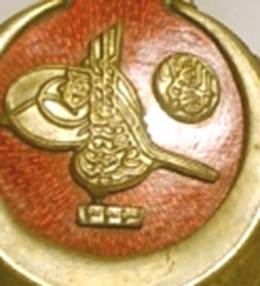
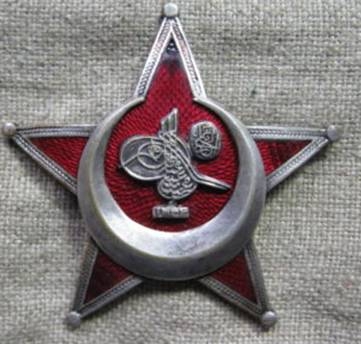

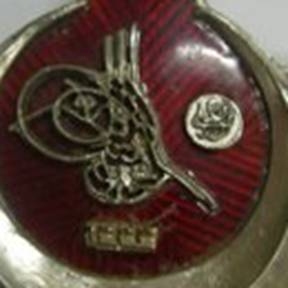


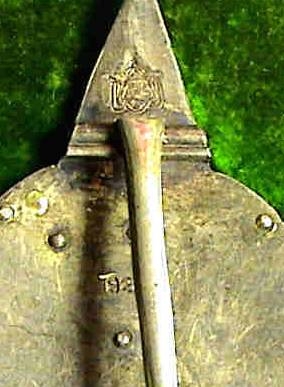
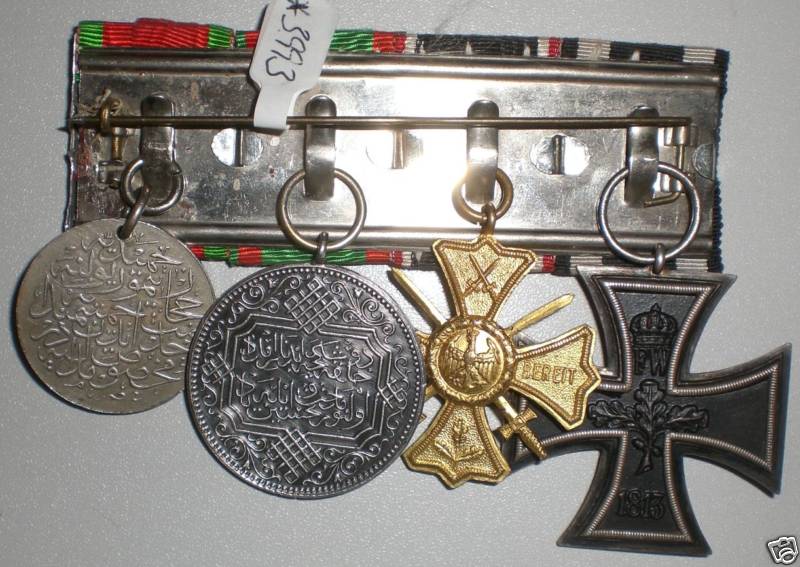
Tugra
in Turkey
Posted
J.H.WERNER -BERLIN 2